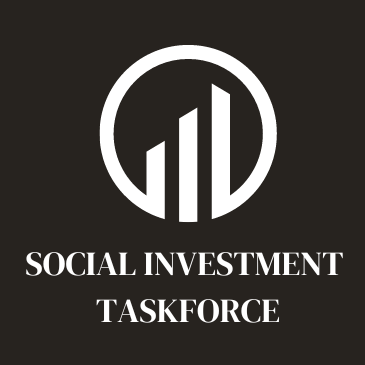Modern banking leaders face pressure from every direction. Shareholders want returns. Regulators demand community investment. Customers want their banks to match their values, so they go for institutions that show social equity and community involvement.
The days when banks could focus solely on profit margins are gone, but this shift isn’t a disadvantage. Research shows that banks with high ESG performance see better equity returns while bringing value to the community. So, it’s a powerful opportunity for financial institutions that want to profit through purpose.
This guide will show you exactly how banks can build social impact into their lending policies to increase return on equity while serving underserved communities.
Let’s jump right into it!
What is Social Impact Lending?
Social impact lending creates measurable change in communities while strengthening your loan portfolio. Many banking executives hear the term and immediately think it means sacrificing returns for “feel-good” marketing.
It helps banks integrate social and environmental outcomes directly into their loan evaluation, pricing, and portfolio management processes.

To understand what this looks like in practice, let’s break it down into its different components:
True Impact vs. Surface Initiative
If you want to strengthen your loan portfolio, you need to create real, measurable change within communities, and social impact does just that. But surface-level initiatives like donating to nonprofits or offering financial literacy workshops won’t change how you evaluate risk or structure deals.
On the other hand, true impact lending considers factors like job creation potential, environmental benefits, and community development outcomes as part of your underwriting process.
Now, let’s take a look at the complete framework that makes this approach work.
Three Core Pillars
You need to know about the three core pillars that provide a solid foundation for this framework, which include 1) Environmental, 2) Social, and 3) Governance considerations.
- Environmental factors include energy efficiency, carbon footprint reduction, and sustainable resource usage. You can use this information to judge how a business handles long-term environmental risks that could impact their operational costs and regulatory compliance.
- Social considerations cover job quality, community impact, and access to essential services. For example, a manufacturing company that provides stable employment and healthcare benefits in an underserved area comes with different risk and opportunity profiles than a company that relies mostly on temporary labor.
- Governance aspects focus on management transparency, ethical business practices, and stakeholder engagement. Companies with strong governance frameworks usually have better financial records and lower operational risks.
Gaps in Traditional Assessment
Traditional risk assessment looks at the past financial records and assets of a business. But this method misses important clues about what might happen in the future.
Here’s what we’ve learned from working with community lenders: the old way of doing things often ignores good businesses in underserved areas. These companies might have loyal customers and solid business plans, but they don’t have the credit history that standard systems want to see.
ESG loan policy factors actually come with early warning signs about how stable a business really is. Think about it this way: a company that cares about the environment usually plans ahead better. And businesses that get along well with their neighbors typically keep more customers when times get tough.
Creating Your ESG Loan Framework
Now that you understand the foundation, let’s build a framework that your ESG loan policy officers can actually use without slowing down deal flow.
If you want to make ESG loan policy work in practice, you need a system that integrates well with your current processes. The good news is that you don’t need to overhaul everything; you can just use new layers of assessment to profit more from your lending decisions.

Here are the core integration points you need to focus on:
Score Environmental Impact
The borrower’s carbon footprint, renewable energy usage, and sustainability commitments should make up about 15-25% of your total evaluation. This will help gauge whether the cost of environmental regulations will increase down the road.
Measure Social Outcome
Track job creation and access to essential services in underserved areas. A business that creates 50 stable jobs in a struggling neighborhood comes with different opportunities than one that automates everything.
Assess Government Standards
Look into their relationship with their relevant stakeholders and how they handle ethical leadership. If everything checks out, there could be fewer surprises that could hurt the performance of your ESG loan policy.
Calculate Risk-Adjusted Return
Factor long-term ESG risks into your pricing models. According to research by Morgan Stanley Capital International, companies with strong ESG loan policy scores are less exposed to systematic risks.
Target Portfolio Diversification
Set specific percentages for impact lending across different geographic areas and demographic segments. For example, you can set aside 20% of your small business portfolio to serve underserved communities.
Pro tip: Start with a pilot program in 2-3 markets before you roll this out everywhere. This way, you’ll actually get to learn what actually predicts ESG loan performance in your specific markets. What matters for environmental risk in California might be completely different from what matters in Ohio.
Serving Underserved Communities
Finding underserved communities is easy, but serving them to build lending relationships that actually work is the hard part.
If you want to succeed with community-focused lending, you need to understand that traditional lending models don’t work in these markets. What works in suburban areas often fails completely in urban or rural communities because the economic patterns are totally different.
How Does Local Market Dynamics Work?
Our team at Social Investment Taskforce has been working with community leaders for years, and we’ve learned that the old way of doing business can miss opportunities in underserved areas. Even with a responsible banking framework and sustainable projects, they don’t have the perfect credit history that your standard systems want to see.
For example, a small grocery store in a low-income neighborhood might not have huge profit margins on paper, but it serves 500 families who depend on it for fresh food.
That creates a stable customer base that most businesses in wealthier areas can’t match. The owner knows every customer by name, and those relationships create resilience that doesn’t show up in traditional financial statements.
These businesses usually have support networks and community connections that help them weather tough times better than isolated suburban competitors.
How to Build Strategic Partnerships
We recommend partnering with local organizations like community development corporations and business associations. They understand the local market better than anyone and can help you identify the businesses that are truly worth supporting.
Self-Help Credit Union shows exactly how this approach works in practice. They’ve maintained a strong ESG loan policy while serving predominantly minority and low-income borrowers.
Read on to learn about how you can implement this in your compliance processes.
Regulatory Requirements and Compliance Benefits
Most compliance officers don’t realize that this type of lending actually makes regulatory compliance easier. Let’s start with the Community Reinvestment Act, which is probably your biggest compliance headache right now.
CRA Benefits
The Community Reinvestment Act becomes much simpler when you have a documented social impact program. You’re building CRA credits with every ESG loan policy, so you don’t have to find qualifying investments during evaluation.
Fair Lending Wins
Social impact actually reduces fair lending scrutiny because you’re actively demonstrating inclusive practices. If you have proper data to show that you’re working alongside these communities, you’re creating a paper trail that works in your favor.
Climate Risk Rules
New climate disclosure requirements are coming whether you’re ready or not. ESG lending puts you ahead of the curve by giving you real data about environmental risks in your portfolio.
JPMorgan Chase’s $30 billion racial equity commitment shows how this works in practice. They’ve deployed over $18 billion toward the commitment while strengthening their CRA compliance and increasing community development activities.
Getting ahead of these trends now will put you in a better position for future regulatory changes. But is it actually profitable for the banks?
The Profitability Factor
While social impact and responsible banking practices sound good on paper, do they actually affect the bottom line?
As we’ve mentioned before, banks with comprehensive ESG lending programs report stronger financial performance compared to traditional lenders. Let’s look at how this data is applied.
Better Risk Assessment

ESG factors work as early warning systems for business problems. A company that ignores environmental regulations will face higher costs down the road. Businesses that treat employees poorly have higher turnover and lower productivity. These issues show up in ESG assessments long before they hit financial statements.
Stronger Customer Relationships
ESG lending creates deeper customer loyalty. When you help a business achieve its sustainability goals, you become its strategic partner. These relationships lead to longer customer retention and more cross-selling opportunities.
Market Positioning Advantages
Social impact investing gives you a competitive edge over banks that are still focused only on traditional metrics. You’re accessing markets and customer segments that other banks overlook.
This also helps with talent acquisition in an increasingly purpose-driven economy. Employees want to work for organizations that match their values, and top talent increasingly considers social impact when choosing employers.
Now that you have a clear picture of how social impact works for banks, let’s learn how to build it into your loan policy.
Implementation Roadmap: Your 90-Day Action Plan
Implementing these policies is simple enough if you know what steps to take. Here’s your step-by-step roadmap for launching social impact investing without disrupting existing operations.
Month 1: Build Your Foundation
The first month is all about creating a game plan that aligns with your current loan plans.
Week 1-2: Analyze Your Current Portfolio
Look at your existing loans to find out what percentage already qualifies as social impact investing. Check for loans to minority-owned businesses, community development projects, or companies with strong environmental practices.
Week 3-4: Assemble Your Team
Pull together people from lending, compliance, community development, and marketing. You need different perspectives to make this work.
Month 2: Create Your Framework
If you’ve read up to this point, you should already know a bit about how to create this framework. But we’ll break it down just in case.
Week 5-6: Develop ESG Scoring
Create simple scoring methods that work with your current systems. Start with basic environmental, social, and governance factors that your bank loan officers can actually assess.

Week 7-8: Train Your Staff
Focus on helping bank loan officers understand how ESG factors improve risk assessment rather than replacing it. Show them how social impact indicators predict loan performance in your specific markets.
Month 3: Launch Your Pilot
Once everything is set up, it’s finally time to launch the new operation.
Week 9-10: Pick Your Test Markets
Choose 1-2 markets where you have strong relationships and good market knowledge. You want to learn what works without risking your entire portfolio.
Week 11-12: Track Everything
Set up systems to measure both social outcomes and financial performance. You need data to prove this approach works before expanding it.
Start Your Impact Journey Today!
Banks that follow responsible banking practices can help their communities by creating fewer loan problems and making more money in the long run. Your community needs a bank that understands that its success should be a win for everyone.
Need help getting started? Visit socialinvestmenttaskforce.org to see how they can help you build a lending program that makes money while making a change.


